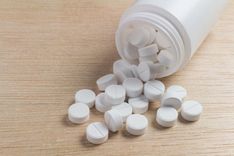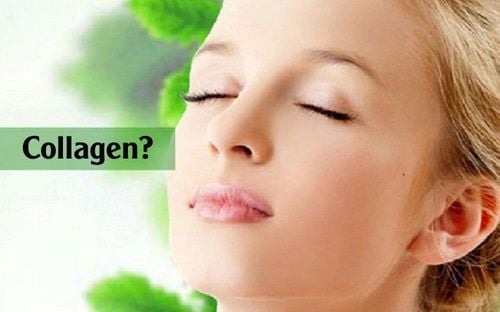Current heart failure treatment guidelines require a combination of multiple drug classes to reduce the risk of death and hospitalization rate. One of the drug combinations is Sacubitril and Valsartan, sold under the brand name Uperio 50mg. So, what are the benefits of Uperio 50mg?
1. What is Uperio 50mg?
Uperio 50mg is a product from Novartis Singapore, containing the active ingredients Sacubitril and Valsartan.
Uperio 50mg is manufactured in film-coated tablet form, identifiable by its light purple color, two convex sides with beveled edges, one side engraved with "NVR" and the other side with "LZ".
2. What are the benefits of Uperio 50mg?
Uperio 50mg is indicated for the treatment of symptomatic heart failure in cases with impaired systolic function. It has been shown to reduce cardiovascular mortality and hospitalizations due to heart failure when compared to Enalapril (an ACE inhibitor). Therefore, Uperio 50mg is often used alongside other heart failure drugs and replaces ACE inhibitors or angiotensin receptor blockers (ARBs).
3. Pharmacological characteristics of Uperio 50mg
Uperio 50mg acts by inhibiting Neprilysin through Sacubitrilat (the active metabolite of Sacubitril) and by blocking the angiotensin II receptor (AT1) thanks to the effects of Valsartan.
The inhibition of Neprilysin increases the levels of natriuretic peptides, activating the Guanylyl cyclase receptor on the membrane, leading to increased levels of cyclic guanosine monophosphate (cGMP) and a series of beneficial effects, such as:
- Vasodilation;
- Increased sodium excretion and diuresis;
- Improved glomerular filtration rate, increasing blood flow to the kidneys;
- Inhibition of renin and aldosterone release;
- Reduced sympathetic activity;
- Prevention of ventricular hypertrophy and fibrosis.
On the other hand, Valsartan in Uperio 50mg inhibits the harmful effects of angiotensin II on the cardiovascular system and kidneys by selectively blocking the AT1 receptor while simultaneously inhibiting angiotensin II-dependent aldosterone release.
Pharmacokinetics of Uperio 50mg:
- Absorption: After ingestion, Sacubitril is metabolized into Sacubitrilat. Sacubitril, Sacubitrilat, and Valsartan reach peak plasma concentration at 0.5 hours, 2 hours, and 1.5 hours, respectively. Food may reduce Valsartan levels in the blood but does not affect clinical efficacy.
- Distribution: Uperio 50mg binds strongly to plasma proteins (about 94% - 97%).
- Metabolism: Sacubitril is converted into Dacubitrilat by Esterase, while only about 20% of the Valsartan dose is metabolized. Uperio 50mg is minimally metabolized via CYP450.
- Elimination: After administration, 52 - 68% of Sacubitril (mainly as Sacubitrilat) and about 13% of Valsartan are excreted in urine, with the remainder excreted in feces. The half-lives of Sacubitril, Sacubitrilat, and Valsartan are approximately 1.43 hours, 11.48 hours, and 9.90 hours, respectively.
4. Dosage of Uperio 50mg
Patients should swallow Uperio 50mg whole with water, either before or after a meal.
Adult dosage:
The starting dose of Uperio 50mg is 2 tablets (100mg) twice daily. This may be doubled after 2 - 4 weeks to a target dose of 4 tablets (200mg) twice daily depending on the patient's tolerance.
- If there are tolerance issues (such as systolic blood pressure below 95 mmHg, symptomatic hypotension, hyperkalemia, or renal dysfunction), adjustments to other combined medications, temporary dose reductions, or discontinuation of Uperio 50mg may be required.
- Uperio 50mg can be combined with other heart failure therapies, replacing ACE inhibitors or ARBs.
- Patients should start with a dose of 1 tablet (50 mg) twice daily and may increase gradually (doubling after 3 - 4 weeks) if the patient has not previously used ACE inhibitors or ARBs or has used them at low doses.
Dosing for specific populations:
- Renal impairment: Adjust the dosage of Uperio 50mg according to the level of renal impairment as follows:
- Mild renal impairment (eGFR 60 - 90 ml/min/1.73m²): No dose adjustment needed.
- Moderate to severe renal impairment (eGFR < 30 - 60ml/min/1.73m²): Starting dose of 1 tablet twice daily.
- End-stage renal disease: Uperio 50mg is not recommended.
Hepatic impairment:
Adjust the dosage of Uperio 50mg according to the level of liver function:
- Mild hepatic impairment (Child-Pugh A): No dose adjustment needed.
- Moderate hepatic impairment (Child-Pugh B) or AST/ALT levels more than 2 times above the upper limit: Starting dose of 1 tablet twice daily.
- Severe hepatic impairment, cirrhosis, or cholestasis (Child-Pugh C): Uperio 50mg is contraindicated.
Elderly: Adjust the dosage of Uperio 50mg according to renal function.
Children: Uperio 50mg is not recommended for children under 18 years of age.
5. Side effects of Uperio 50mg
When using Uperio 50mg, patients may experience some unwanted side effects, the most common of which are:
- Anemia
- Hyperkalemia/Hypokalemia (high/low potassium levels)
- Hypoglycemia (low blood sugar)
- Dizziness, headache, fainting, or positional vertigo
- Orthostatic hypotension (drop in blood pressure upon standing)
- Cough
- Gastrointestinal disturbances such as diarrhea, nausea, or gastritis
- Kidney failure
Some less common side effects of Uperio 50mg include:
- Allergic reactions or hypersensitivity
- Skin itching, rash, or angioedema (swelling under the skin)
6. Contraindications of Uperio 50mg
- Hypersensitivity to Sacubitril, Valsartan, or any components of Uperio 50mg
- Concurrent use with ACE inhibitors or within 36 hours after discontinuing treatment with ACE inhibitors
- A history of angioedema due to ACE inhibitors or angiotensin II receptor blockers
- Patients with a personal or familial history of angioedema
- Concurrent use with Aliskiren in patients with diabetes or renal impairment (eGFR less than 60 ml/min/1.73m²)
- Severe liver impairment, cirrhosis, or cholestasis
- Uperio 50mg is not indicated for pregnant patients.
7. Precautions When Using Uperio 50mg
Double Blockade of the Renin-Angiotensin-Aldosterone System (RAAS):
- Do not use Uperio 50mg concurrently with ACE inhibitors due to the increased risk of angioedema, and do not start Uperio 50mg within 36 hours after the last dose of ACE inhibitors and vice versa.
- Exercise caution when using Uperio 50mg with direct renin inhibitors (like Aliskiren).
- Combining Uperio 50mg with angiotensin receptor blockers is contraindicated since it contains Valsartan.
Risk of Hypotension from Uperio 50mg:
- Treatment with Uperio 50mg should only be initiated when the patient has a systolic blood pressure above 100 mmHg. Cases with systolic blood pressure below 100 mmHg have not been studied.
- Uperio 50mg may cause symptomatic hypotension, especially in individuals over 65 years of age, patients with kidney disease, or those with low systolic blood pressure (below 112 mmHg).
- Blood pressure should be closely monitored during the start or dose adjustment of Uperio 50mg. If hypotension occurs, the dose may be temporarily reduced or the medication stopped while also considering adjustments to other heart failure medications and identifying potential causes of hypotension (like dehydration from diuretics, low-salt diet, diarrhea, or vomiting).
Uperio 50mg and Impaired Kidney Function:
- Patients should have their renal function monitored regularly while taking Uperio 50mg. The degree of renal impairment is proportional to the likelihood of hypotension.
- Uperio 50mg may decrease kidney function, particularly in patients who are dehydrated or using NSAIDs concurrently.
Uperio 50mg and Hyperkalemia:
- Do not initiate treatment or consider stopping Uperio 50mg if serum potassium levels exceed 5.4 mmol/L, as the drug can cause hyperkalemia (and sometimes hypokalemia).
- Potassium levels should be monitored regularly during Uperio 50mg therapy, especially in high-risk patients like those with kidney disease, diabetes, high potassium diets, or those taking mineralocorticoid receptor antagonists.
- Patients with significant hyperkalemia should have their concurrent medications adjusted or the dose of Uperio 50mg temporarily reduced or stopped.
Uperio 50mg and Angioedema:
- If angioedema occurs while taking Uperio 50mg, the medication should be stopped immediately, and treatment should continue until symptoms resolve. Patients should not take Uperio 50mg again.
Uperio 50mg in Patients with Renal Artery Stenosis:
- Uperio 50mg may increase blood urea and creatinine in patients with renal artery stenosis, thus monitoring renal function is essential.
Uperio 50mg in NYHA Class IV Heart Failure Patients: Caution is advised when prescribing Uperio 50mg for these patients due to limited clinical experience.
Uperio 50mg may cause dizziness and fatigue; caution should be exercised when using it in individuals driving or operating machinery.
Uperio 50mg Use During Pregnancy:
- There have been reports regarding the effects of Uperio 50mg on fetal development, including spontaneous abortion, oligohydramnios (low amniotic fluid), and kidney dysfunction in newborns, mainly related to the Valsartan component. Patients on Uperio 50mg should stop immediately upon discovering pregnancy and promptly inform their doctor.
Uperio 50mg Use During Breastfeeding:
It is unclear if Uperio 50mg is excreted in breast milk. Therefore, it is best not to prescribe this product to breastfeeding patients. However, consideration may be given to stopping breastfeeding if the use of Uperio 50mg is essential for the mother.
8. Drug interactions of Uperio 50mg
Some contraindicated interactions of Uperio 50mg:
- Angiotensin-converting enzyme (ACE) inhibitors increase the risk of angioedema;
- Aliskiren is contraindicated for concurrent use with Uperio 50mg in patients with type II diabetes.
Recommended interactions to avoid with Uperio 50mg:
- Angiotensin II receptor blockers (ARBs);
- Aliskiren if the patient has renal impairment (glomerular filtration rate less than 60 ml/min/1.73 m²).
Interactions that require careful consideration when combining with Uperio 50mg:
- Statins: In vitro, the active ingredient Sacubitril inhibits the transport proteins OATP1B1 and OATP1B3, leading to increased statin levels in plasma. Therefore, concurrent use of Uperio 50mg with statins should be approached with caution;
- PDE5 inhibitors (including Sildenafil): Be aware of the increased risk of hypotension when used in combination with either medication;
- Potassium: Concurrent use of Uperio 50mg with potassium-sparing diuretics, mineralocorticoid receptor antagonists (Spironolactone, Eplerenone), potassium supplements, etc., may lead to increased potassium and creatinine levels in the blood;
- Non-steroidal anti-inflammatory drugs (NSAIDs): Concurrent use with Uperio 50mg increases the risk of progressive renal dysfunction in older patients, especially if they have reduced circulating volume or prior renal impairment;
- Lithium: Uperio 50mg may increase lithium blood levels and risk of toxicity, particularly when combined with another diuretic;
- Transport proteins OATP and MRP2: Sacubitrilat and Valsartan are substrates of OATP1B1, OATP1B3, and OAT3, while Valsartan is also a substrate of MRP2. Thus, concurrent use of Uperio 50mg with inhibitors of OATP1B1, OATP1B3, OAT3 (such as Rifampin, Cyclosporin) or MRP2 (such as Ritonavir) may increase levels of Sacubitrilat or Valsartan;
- Metformin: Uperio 50mg reduces Cmax and AUC of Metformin when combined.
To arrange an appointment, please call HOTLINE or make your reservation directly HERE. You may also download the MyVinmec app to schedule appointments faster and manage your reservations more conveniently.













